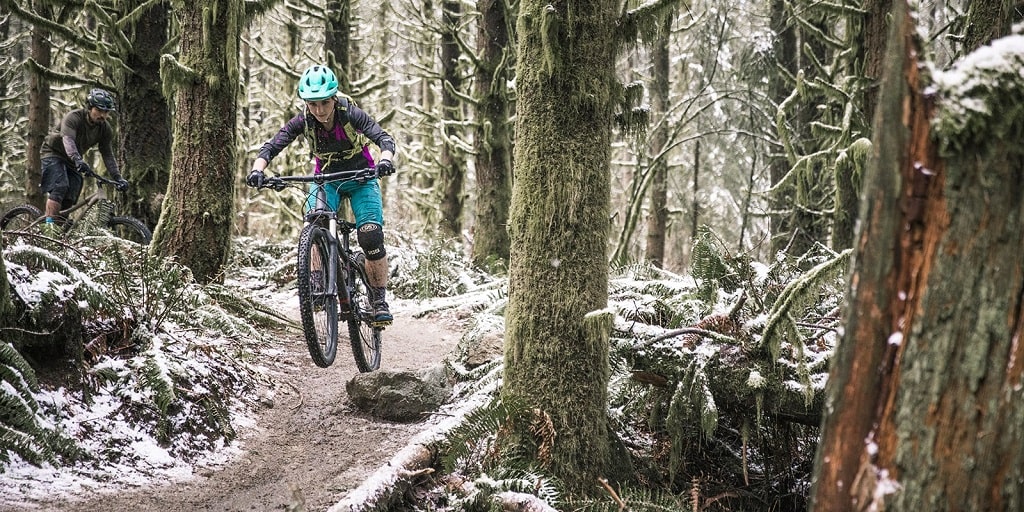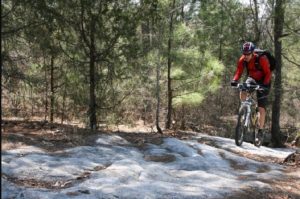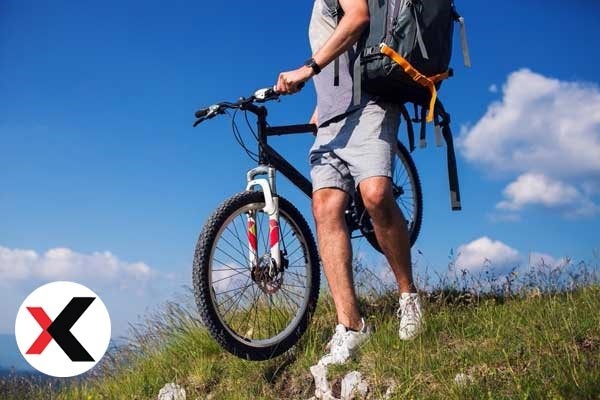Obstacle Riding
Tracks have a variety of obstacles; some are easy to manage while others you need to work up to. Ensuring you use the right techniques for the situation can help you overcome almost all of them, without compromising safety.
MTB Obstacle Riding Tips

When riding on mountain bike trails there are usually some obstacles or structures. Always ensure you ride within your limits and ensure you practice skills and techniques in a controlled situation before applying them on a ride.
Obstacles can vary from roots, rocks, man-made structures, to challenging terrain such as sand. Once you know the technique and feel confident in applying them, conquering the obstacle can be very rewarding. Keep Reading The 10 Best Mountain Bikes Under $1000 In 2021.
Walkthrough
If you come up to a new obstacle or are in doubt, stop and walk through it first. Have a look at the line you will take, and any areas you will need to avoid.
Line
Once you identify the hazards pick your line. Keep the focus on where you want the bike to go, many times if you keep staring at the obstacle you inadvertently end up hitting it.
Conditions
Some obstacles change characteristics when the conditions alter. Rain can usually make obstacles slipperier and extra precautions need to be taken, on the other hand, if the trail is sand-based, extreme heat can dry parts of it out making the sand lighter and more difficult to navigate.
Approach
Ensure the line you pick if rising is at 90 degrees to the obstacle such as roots because the back tire tends to slide. Keeping your approach at 90 degrees reduces the chance of sliding.
Eyes Up
Try to keep your eyes up and scan ahead. There is a tendency to keep your eye on your front tire. This gives you less time to plan ahead and thus more likely to pick a harder line. Also, it slows your momentum down and causes you to put too much weight on the front tire, causing it to dig or catch on the obstacle.
Pedals
Keep your legs even, to help clearance & reduce the likely hood of your peddle catching as you go over the obstacle.
Arms
Keep your arms bent and loose with a firm grip on the handlebars. If your arms are rigid, you will put all the pressure on your front suspension. Keeping them bent allows you to absorb a greater amount of terrain change and bumps while keeping control.
Legs
Bending your legs helps in shock control and lowers your center of gravity.
Torso
Keep it low and relaxed, lowering your center of gravity and helping you adjust your weight quickly and smoothly.
Body Position
Practice moving your body forwards, backward, and from side to side. In some situations, placing more weight on the front tire is required and moving your body forwards helps this, while in others like drop-offs, keeping low and to the back is required.
Gearing
Shift up gears before reaching the obstacle. This provides helps keep your bike moving steadily and reduces the likely hood of your tire slipping. Also, you can overcome any inclines in the obstacle easier than if you are in low gear.
Climbing
Almost any track features some climbing, be it short bursts or long extended climbs. Learning to use your gearing and pedaling correctly can help you conquer those climbs.
MTB Climbing Tips

Along almost all trails in mountain biking, you will encounter an ascent or hill climb. It’s a great part to build fitness, muscle and overtake slower riders that take it easy on the hills. Keep Reading The 10 Best Beginner Mountain Bikes In 2021.
Assess
Try to spot any inclines and hills before you hit them. This will allow you plenty of time to prepare yourself regarding position and gearing. It also means that you can choose your lines and access the terrain to avoid areas of roots and sand if possible. If you are in doubt climb off your bike and walk-up. Sometimes you will reach the top with more energy if you walk your bike up than pedaling to reach the top.
Momentum
It is your friend, build up as much momentum as you using each little downhill speed you can and pushing your pedals hard. The less work you have to do on the hill the faster you will climb and less energy you will expend.
Spin
As you approach a climb try to develop a fast, strong spin. This will assist in reducing the strength required to push up the hill and the more fitness you use rather than the strength of your legs the less fatigued you will get and be able to climb for longer easier.
Gear
Selecting the right gear for the climb is very important. Usually, you want to avoid changing gear during the climb especially up because if you are riding slow your chain will be under a lot of stress and you could end up snapping a ring and grinding to a halt. If you need to change gear using the rear cassette and shift smoothly and try to create some slack in the chain by giving one stronger push just before your gear change so that you can use the slight increase in momentum for the gear change.
Body Position
Shifts in body position might be required during some climbs. If it is steep moving forward and keeping weight on your front wheel helps. Otherwise, if you find your back wheel losing traction you might have to sit down on the seat to keep weight on the wheel. In some instances, altering during the climb is required to ride over steps and different terrain.
Breathing
Keeping your legs pumping requires a lot of air. Concentrating on your breathing with a cycle of 3 revolutions in 3 out. It helps regulate the oxygen flow, and ensure you use the lower part of the diaphragm, or close to your stomach to maximize the effect of the oxygen coming in. Breathing through your nose and out through your mouth helps regulate nice long effective breaths and minimize the panting you experience when breathing through the mouth only.
Rotation
During long extended climbs rotate climbing in your saddle and out of the saddle. This helps use a different part of your legs muscles and helps keep the momentum going.
Stall
If you need a quick rest of caught up to someone slower, use the track stand. Rather than stopping and dismounting that will be harder to start the momentum and climb back into the saddle on a hill. Balance using your arms, legs, and body, so that you can catch your breath and resume the climb safely.

Taylor is an outdoors & sports equipment specialist, sports author, bike traveler, bicycling and skating expert, and smoke-free ride activist. He is also a regular reviewer of outdoor sports gadgets and accessories. About safety gear and biking facts he analyzes and gives his feedback to outdoorxsports. Writes and tests to help him, you, and us.

